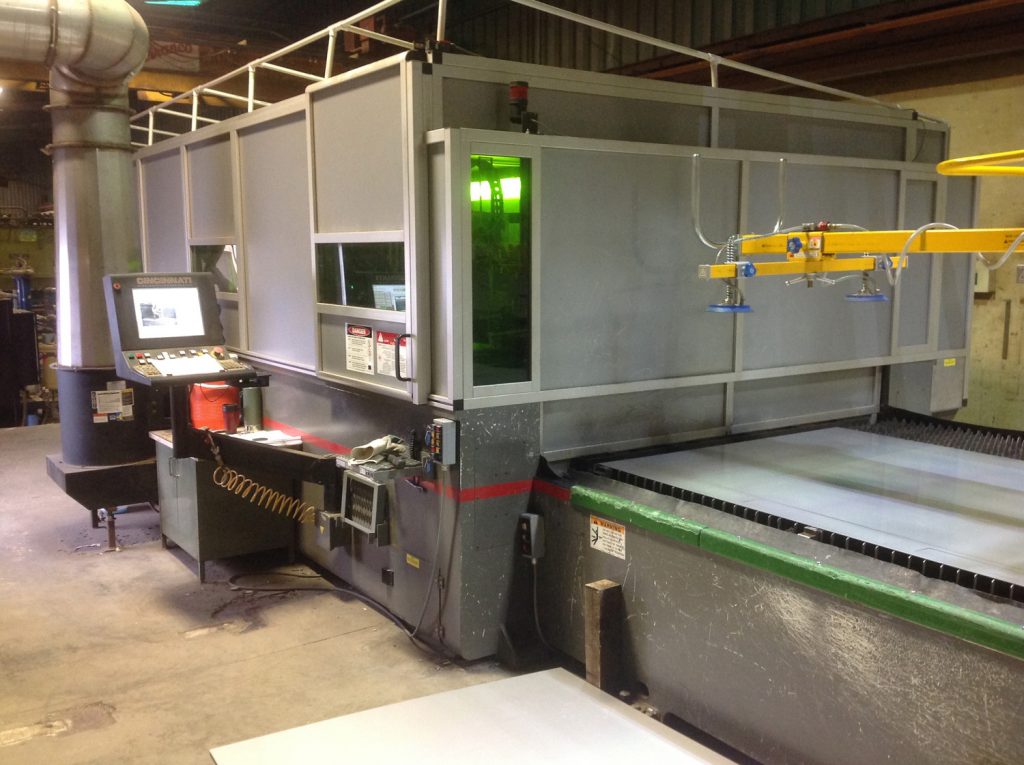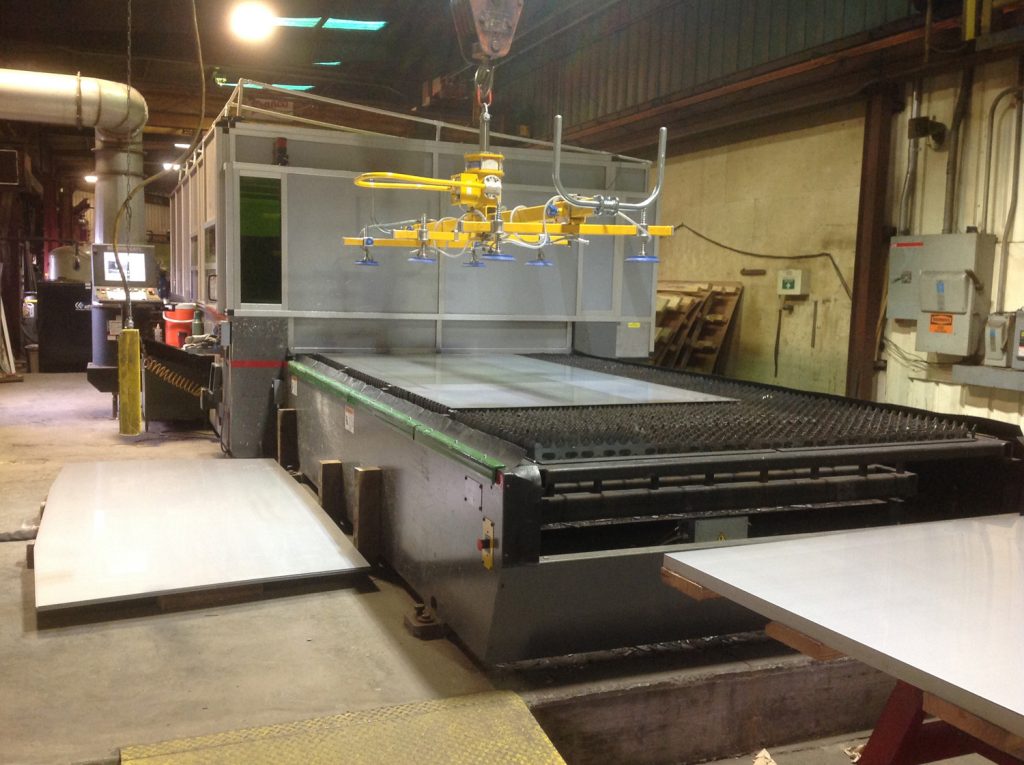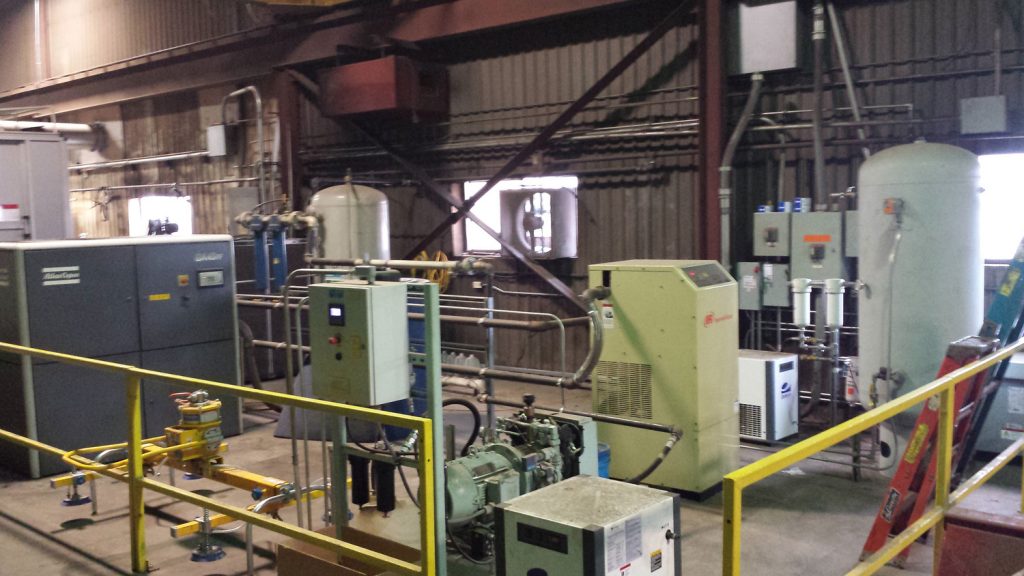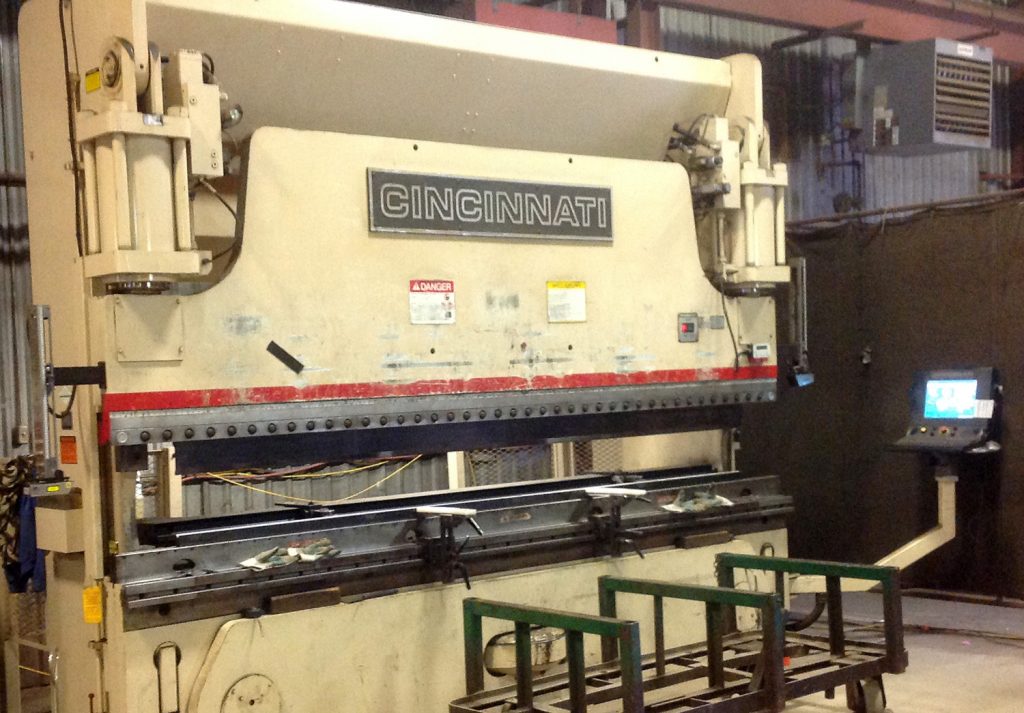Can a machine tool acquisition change the way a 50-year-old shop approaches production? When it’s a fiber laser system that reduces processing time more than 90 percent – cutting with air assist gas at a fraction of the cost of nitrogen – the answer is clear.
“The new fiber laser is a game-changer,” said Stuart Rumple, production manager at Doyle Equipment Manufacturing. “This was a technology leap for our company, and it’s the best thing we’ve ever done to increase productivity. It has changed the way we think about how we manufacture.”
The Cincinnati Incorporated CL-940 fiber laser replaced two older CO2 lasers, a 1500- and 3000-watt, and immediately reduced processing time from 64 hours to four on components for Doyle’s dry bulk material handling equipment. The CL-940 has also cut operating costs and helped the company stay current on manufacturing techniques that lead to higher productivity.
 “Our results from operating the fiber laser with air assist have made us much more open to new ideas, equipment and techniques,” said Rumple. “Now we focus on processing the right material with the right machine for the most efficient results.”
“Our results from operating the fiber laser with air assist have made us much more open to new ideas, equipment and techniques,” said Rumple. “Now we focus on processing the right material with the right machine for the most efficient results.”
Doyle Equipment Manufacturing is a fourth-generation family-owned business based in Quincy, IL, with a second manufacturing operation in Palmyra, Missouri. Its 150 employees manufacture dry bulk material handling equipment for a worldwide customer base in the dry fertilizer industry, and the company’s vertically integrated product line includes conveying, blending, tending and spreading equipment.
The company produces more than 11,000 parts, with annual quantities ranging from a few to more than 10,000 pieces. More than 90 percent of all Doyle parts, primarily stainless steel, are processed through lasers, so highly productive laser cutting is a key to the company’s cost-efficient operations.
Higher Productivity: A Breath of Fresh Air
Rumple and the team at Doyle were aware of the possibility of cutting with air assist on a fiber laser, and saw it first-hand in a training session at Cincinnati Incorporated.
 “We saw it was possible, but didn’t know which materials and thicknesses it would work best with,” said Rumple. “We also thought the low pressure of shop air would be a limiting factor, so we decided to do test cuts with breathing-quality air to see if we could make it work.”
“We saw it was possible, but didn’t know which materials and thicknesses it would work best with,” said Rumple. “We also thought the low pressure of shop air would be a limiting factor, so we decided to do test cuts with breathing-quality air to see if we could make it work.”
Using its existing shop air at 100 psi, Doyle added filtration with a refrigerated dryer which feeds a high-pressure booster (450 psi maximum) to a high-pressure receiver, filters and a refrigerated dryer, which ultimately supplies 350 psi regulated clean, dry air to the machine.
“We did five hours of test cuts on all of our various parts and materials and were very pleased with the results,” said Rumple. “Our main concern is the weld quality after the part is cut. We need a nice clean edge for a good weld, and those processed on the fiber laser with air assist welded perfectly.”
Doyle now cuts all its18-gauge through quarter-inch 304 stainless steel, and 14-gauge through 10-gauge mild steel using high-pressure air assist. The fiber laser also gets limited use running on oxygen, cutting quarter-inch mild steel used in fixture work.
“Ninety-five percent of our fiber laser cutting is stainless steel using shop air,” added Rumple.
 And, the price is right
And, the price is right
In addition to higher productivity, the new fiber laser cutting system is also saving money due to the lower cost of air compared to nitrogen. According to Rumple, a nitrogen system requires a 50-HP compressor to generate the necessary pressures, but with air assist, the required compressor is only 15 HP.
“We’ve got the cost to run the fiber down to less than $4 per hour which is about 90 percent cheaper than using nitrogen as the assist gas,” said Rumple. “And, Cincinnati has added a cover for above and below the lens that extends lens life indefinitely. Replacement lenses are typically the second biggest operating cost on the fiber machine, and now that’s no longer a factor either.”
It started with a press brake
The fiber laser system was not Doyle’s first Cincinnati machine. The company’s “partnership” with Cincinnati started in the late 90’s with the acquisition of a 230-ton AutoForm press brake to bend formed parts up to half-inch mild and stainless steel. Since then the company has added two Cincinnati AutoForm press brakes at its Quincy location – a 135-ton and a 90-ton – and a 135-ton AutoForm at its Palmyra, Missouri facility. A Cincinnati CL-850 5000-watt CO2 laser was also added at Palmyra to improve throughput and cut lead times by bringing laser work back in-house.
 “The CL-850 handles all of our 14-gauge through one-inch mild steel cutting, as well as processing our quarter-inch and thicker 304 stainless,” said Rumple. “Our experience with Cincinnati has been excellent, and we consider them a partner in our business. We’ve provided input to them on different things we like to see in their machines and they’ve taken that feedback and implemented it. The press brakes are easy for our operators to learn and use and the CO2 laser provides some flexibility, as it can also cut wood and ABS. We also love the ‘American reliability’ of all our Cincinnati machines.”
“The CL-850 handles all of our 14-gauge through one-inch mild steel cutting, as well as processing our quarter-inch and thicker 304 stainless,” said Rumple. “Our experience with Cincinnati has been excellent, and we consider them a partner in our business. We’ve provided input to them on different things we like to see in their machines and they’ve taken that feedback and implemented it. The press brakes are easy for our operators to learn and use and the CO2 laser provides some flexibility, as it can also cut wood and ABS. We also love the ‘American reliability’ of all our Cincinnati machines.”
Doyle also uses Cincinnati software modules to enhance its laser and press brake performance. “We like the convenience of being able to cut one part at the machine, and the software helps us do that,” said Rumple. “We usually use the bend simulator during part/product development and it makes that process much simpler.”
To higher productivity and beyond
The success of operating the CL-940 using air assist has led Doyle to order a second fiber laser cutting system from Cincinnati, as well as another 230-ton Autoform press brake. The machines will be housed in the company’s new 195,000 sq. ft. facility, also in Palmyra, Missouri.
About Cincinnati Incorporated
Since their founding in the late 1890’s as The Cincinnati Shaper Company, CINCINNATI Incorporated has built its reputation on three principles: innovation, performance and endurance. The company built on their leadership with those early machines to begin manufacture of metal fabrication equipment in the early 1920’s, and this remains their primary focus. CINCINNATI is one of a handful of U.S.-based, build-to-order machine tool manufacturers, and have shipped more than 50,000 machines in over 100 years of operation. From theirr modern 500,000-square-foot plant and technical center on an 80-acre campus near Cincinnati, Ohio, they engineer and build their machines to the standard of ruggedness required in the North American market – with premium engineering features that stand up to years of rigorous use in demanding environments.



















